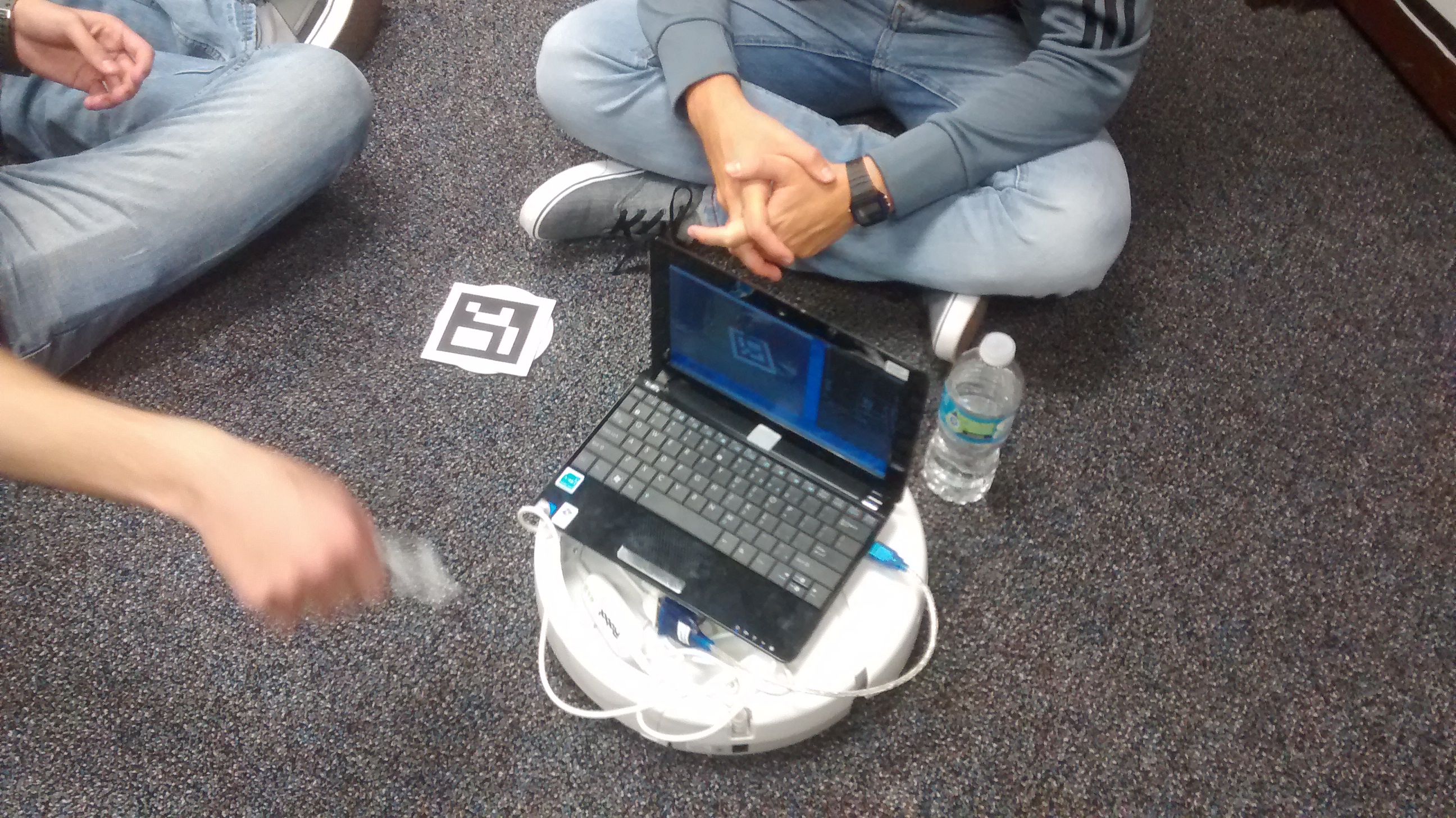
Home Weekly Reports My Mentors Project About Me

The IR was in charge of finding the HomeBase with the help of the Enviroment team. The Aruco markers would tell the robot its location and the robot would then steer its way to the Homebase, but docking to the Homebase is much more complicated than what it sounds like. If the IR sensor ended up outside the range of the HomeBase, the robot would have no idea where it would end up, however, once in the range of the homebase, the robot would then know its location relative to the HomeBase and try to navigate itself towards it. Even though it got to the Homebase, the robot only actually docked and started to charge about 80% of the time, an achievement that is still quite impressive regarding the turnaround we had.
The Aruco team was in charge of coding in the ability to "see" the world by identifying Aruco Markers placed around our particular enviroment. To do this, they specialised a few laptops to run their code and see the markers. Even though it was a tedious task, the team was able to succesfully test a few markers out of the over 100 installed in our enviroment, thus solidifying our progress towards our ultimate goal to have the robot navigate itself with no human aid. At the moment, the only problem that they are facing is that their movement isn't very accurate. The robot says it goes to a specific place, but in reality, that isn't what is happening in the real world.
The Environment team was placed in charge of printing all of the Aruco markers and placing them in as many locations as possible without interfering with the other teams and figuring out their exact position in relation to the origin. Not only that, but once the distance from the origin was found, the next challenge was to discover and mark down the angle that the marker was from the origin. Even though it was less mentally demanding, it was certainly the most tedious part of the project that could be assigned to someone.
